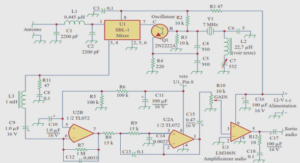Caractérisation des hémocytes de Sepia officinalis et développement de leur culture primaire dans le but de réaliser des tests de toxicité in vitro
Little is known about the immune system of cephalopods, in spite of their many highly de- rived characters within the molluscan clade, including a vertebrate-like high-pressure closed circulatory system. Further the economic importance of cephalopod fisheries, potential for aquaculture, and use as ecotoxicology models demand a thorough understanding of their immune system. In this study, we present a comprehensive characterization of hemocytes in the common cuttlefish S. officinalis. Cytological stainings, electron microscopy- and flow cytometry-observations highlight a single granulocyte population with various densities of of eosinophilic granules and unstained vesicles. These hemocytes contain acid phosphatase-, lysozyme- and proPO system enzymes, and have high activity in bead phagocytosis assays. Interestingly, bead pre-incubation in plasma results in time-dependent aggregation perhaps resulting from hemocyanin-coating, and decrease in phagocytosis. This study provides the basis for understanding hemocyte-mediated immunity in the common cuttlefish, and essential background for future studies on cephalopod immunity.
Invertebrates resist pathogens despite their lack of adaptive immunity (Loker et al.,2004). The tremendous variety of invertebrate life histories and ecological niches suggests a great diversity of immune strategies (Rowley et Powell, 2007). Among Mollusca – one of the most diverse groups of animals (Ponder et Lindberg, 2008), studies of immunity have mostly focu- sed on bivalves (e.g. Aladaileh et al.,2007;Alamet al., 2002; Chang et al.,2005;Donaghy et Volety, 2011; Donaghy et al.,2009a;Honget al.,2013;Lópezet al., 1997b; Matozzo et al., 2007; Salimi et al.,2009;Wanget al., 2012; Wootton et Pipe, 2003) and gastropods (e.g. Accorsi et al.,2013;Barraccoet al.,1993;Donaghyet al., 2010; Mahilini et Rajendran, 2008; Matricon-Gondran et Letocart, 1999; Travers et al., 2008), while few studies have focused on cephalopods (Castellanos-Martínez et Gestal, 2013; Ford, 1992). Cephalopods are an inter- esting model because of their (1) vertebrate-like high-pressure closed circulatory system, (2) high sensitivity to environmental parameters, (3) short-life span and (4) elevated metabolic rate (Melzner et al., 2007a; Pierce et al., 2008). Moreover, their economical importance has recently grown in terms of fisheries and aquaculture (e.g. Berger, 2010; Payne et al.,2006; Reid et al.,2005;Sykeset al.,2006b;Uricell-mediated mechanisms acting together to eliminate invading micro-organisms (Soudant et al., 2013; Malham, 1996). Humoral factors mainly include lectins (e.g. agglutinins, op- sonins), antimicrobial factors (e.g. peptides, acid phosphatases, lysozymes), and several si- gnaling pathways including prophenoloxidase (proPO) and proteolytic cascades (Rowley et Powell, 2007; Wang et al.,2013b).Incontrast,cell-mediateddefensemechanismsareprimarly performed by hemocytes (Hcs) – cells synthetized in white bodies and freely circulating in plasma and infiltrating in tissues (Claes, 1996; Cowden et Curtis, 1981). Hcs are of central importance to invertebrates because of their involvement in numerous physiological func- tions (Beninger et al.,2003;Donaghyet al., 2009b; Matozzo et al., 2001; Montes et al.,1995; Mount et al.,2004),iidae within Cephalopodia (Boucaud-Camou et Boismery, 1991; Uriarte et al.,2011;Wanget al., 2003), they may also have distinct immune requirements.
In this study, we performed cytological stainings, electron microscopy and flow cytometry (FCM) analysis to morphologically characterize S. officinalis Hcs. In addition, we investiga- ted humoral factor localization between plasma and cells, and phagocytic reactions at several incubation times, temperatures and plasma concentrations. Our results highlighted one gra- nulocyte population with various densities of acidophilic granules and unstained vesicles. The Hcs, which contained acid phosphatase, lysozyme and proPO system enzymes, had high phagocytic ability, modulated by plasma in our assay conditions.
Animals
Thirty-one adult cuttlefish S. officinalis (21.5 ± 3.1 cm mantle length) were obtained from traps deployed during spring 2011 and 2012 along the Calvados coast (Normandy, France). Cuttlefish were then conditioned at the Centre de Recherches en Environnement Côtier (Luc- sur-Mer, Normandy, France) in 4500-L tanks in an open seawater circuit for at least 2 days, fed with crustaceans Crangon crangon and Carcinus maenas,andstBefore hemolymph sampling and following ethical procedures (Directive 2010/63/EU), cuttlefish were anesthetized as described by Andrews et al. (2013) through placement for 10 min in seawater containing 2 % ethanol. Between 9 and 13 ml of hemolymph was then withdrawn from the anterior mantle vein (King et al., 2005) using a syringe with 18-gauge needle. The sample was transferred into a sterile tube, diluted or not with one volume of cooled sterile antiaggregative modified Alsever solution (115 mM glucose ; 27 mM sodiumhe procedure (see below), and kept on ice to minimize cell clumping. Hc viability was checked by mixing one volume of Alsever-diluted hemolymph with one volume of trypan blue solution (0.4 %) and Hc concentration was determined with non diluted hemolymph using a Thoma cell. Once sampling was completed, animals were euthanized by increasing ethanol concentrationto 10 % (Oestmann et al.,1997).






